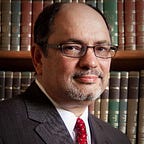History of Christopher Columbus
The man who sailed from Spain to discover America was neither Spanish nor did he actually discover America. But it was true that:
In fourteen hundred and ninety-two
Columbus sailed the ocean blue
Origin
He was actually Italian, born in 1451 to a wool merchant in Genoa and first went to sea in his youth. He sailed to Iceland and Guinea for business, and later spent some time as a privateer. It was in 1484, the year after Martin Luther was born in Germany, that Christopher Columbus presented to King John of Portugal the idea of an “Enterprise of the Indies” (no relation to Star Trek‘s starship) where he would sail west to the East Indies, thinking it shorter than the eastern spice trade route. After unsuccessful appeals to the kings of Portugal, England, and France he eventually moved to Spain whereupon his fourth request, he secured the patronage of King Ferdinand and Queen Isabella. You know them as the parents of Queen Katherine of Aragon, first wife of Henry VIII of England, and grandparents of Charles V, Holy Roman Emperor who presided over the trial of Martin Luther at the Diet of Worms.
Voyages
Columbus sailed from Palos, Spain with three ships on August 3 and arrived not in the East Indies, but in the Bahamas on October 12 of 1492, where he named the locals “Indians.” He sailed on to the islands of Cuba and Haiti thinking he’d reached the islands of the East Indies. Contrary to popular belief, Columbus was not alone among 15th century Europeans in thinking that the world was round, but he did vastly underestimate the circumference of the Earth.
Fame
He returned with captives and gold to a hero’s welcome in Spain, which subsequently enjoyed its Golden Age of exploration. Columbus made three more voyages to the New World including the Caribbean and South America, but never saw the North American continent.
So did he discover America? Perhaps, if you neglect the indigenous people already living there or the Vikings who had visited pre-Columbian America 500 years earlier. But his journeys did result in the first European colonies in the New World of a permanent nature. And in the United States of America, Columbus Day is one of only four federal holidays that honored individuals, including Jesus, President Washington (and Lincoln), and Martin Luther King, Jr. It is also celebrated across Latin America under many names as Dia de la Raza, Dia de la Hispanidad, Dia de las Americas, and Dia del Respeto a la Diversidad Cultural.
Columbia
Other European explorers, within decades following Columbus, landed in North America including Juan Ponce de Leon (Florida), Alonso Alvarez de Pineda (Texas), and Giovanni da Verrazanno (New York). It was Colombus, who never got closer than Bermuda, whose name was used for the newly independent United States in the late 1700s. Other examples include the Columbia River, Columbia University, and the District of Columbia.
The Holiday
How did Columbus Day become a holiday? While he was not widely known in America until the mid-18th century, but this began to change after the US gained its independence from Britain. Italian immigrants began to arrive in American in 1820, but the large wave of immigration was between 1880 and the start of WWI in 1914. As with the Irish who had settled in the US before them, they experienced religious and ethnic discrimination, including mass lynchings in 1891.
The next year, President Benjamin Harrison became the first president to call for a national observance of Columbus Day, on the 400th anniversary of the Italian’s arrival. The first state to observe Columbus Day was Colorado in 1906. Angelo Noce, an Italian immigrant and the founder of Colorado’s first Italian newspaper, La Stella (the Star), was instrumental in creating the holiday. Fourteen other states followed suit within the next five years.
It was the Knights of Columbus, a Catholic fraternal service organization, who were instrumental in making it a federal holiday during the presidency of Franklin Roosevelt in 1934. It was set on October 12, but now is fixed to the second Monday in October, by coincidence, the same day as Canadian Thanksgiving since 1957.
Redaction
Though it remains a federal holiday and in some cases, but not all, a state holiday, over the last 25 years about a dozen cities have voted to observe the day locally as Indigenous Peoples Day. Some cities declare it an official city holiday, others do not. In California, Native American Day is observed on the fourth Friday in September. California’s Burbank recently voted for this new name, joining Berkeley, San Fernando and, most recently, Los Angeles as the only cities in the state that have replaced Columbus Day with Indigenous Peoples Day.
Some of the allegations in support of this change assert that the hagiography of Columbus was based on a best-selling book that popularized his story, though inaccurately. In 1828 Washington Irving published A History of the Life and Voyages of Christopher Columbus which has since served as a myth-making glorification of the voyager. In the book, Columbus is depicted as a benevolent man of adventure, known for his generosity to the indigenous native Americans. This book also promoted the incorrect belief at the time that most thought the Earth was flat.
Is Columbus Day a day off school or work for you?
Bill Petro, your friendly neighborhood historian
www.billpetro.com
